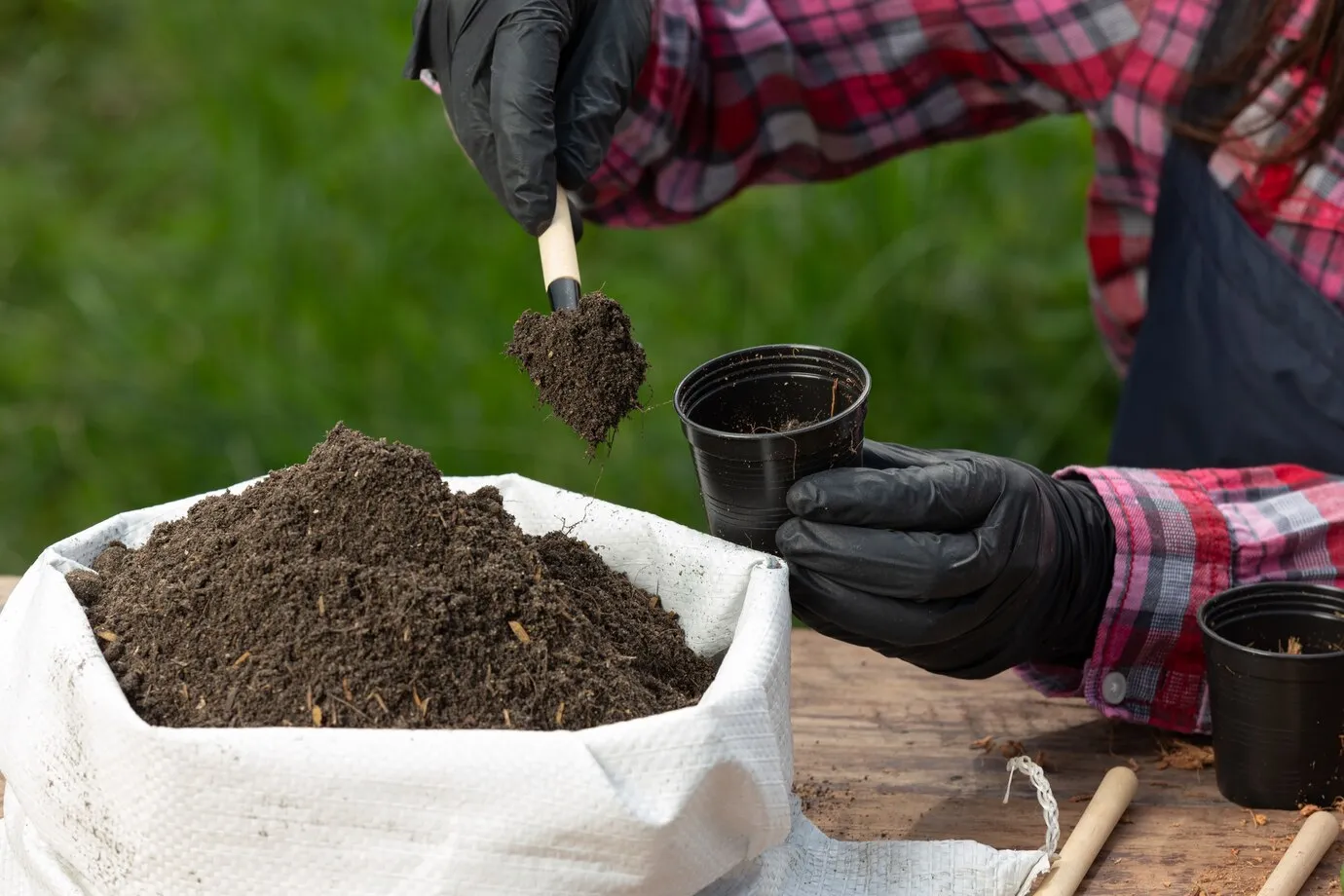Mulching and soil enrichment are two key elements for maintaining a healthy, thriving garden throughout the year. By adding organic matter and mulches to your garden beds, you can improve soil quality, retain moisture, and suppress weeds, all of which contribute to a more vibrant and productive garden. Seasonal mulching and soil enrichment techniques ensure that your garden remains nourished through changing weather conditions and supports plant growth from one season to the next. In this post, we’ll explore the best practices for mulching and soil enrichment, including when to apply them and the benefits they provide to your garden.
Why Mulching and Soil Enrichment Are Important
Mulching and soil enrichment both have several key benefits for your garden:
- Moisture Retention: Mulch helps retain moisture in the soil, reducing the frequency of watering needed, especially during hot, dry periods.
- Weed Suppression: A thick layer of mulch prevents weeds from germinating and competing with your plants for nutrients and water.
- Temperature Regulation: Mulch insulates the soil, helping to keep it cool in the summer and warm during the winter, protecting plant roots from temperature extremes.
- Soil Improvement: Organic mulches and soil amendments like compost enrich the soil with essential nutrients, improving plant health and supporting beneficial microorganisms.
- Soil Structure: Over time, mulches break down into organic matter, improving soil structure by increasing aeration and drainage while preventing soil compaction.
Seasonal Mulching Techniques
The timing and type of mulch you apply depend on the season and your gardening goals. Let’s look at how to approach mulching for both spring and fall.
Spring Mulching: Preparing for Growth
Spring is an ideal time to add a fresh layer of mulch to garden beds. After the winter months, mulching helps your garden wake up and prepares it for the growing season. Here’s how to approach spring mulching:
- Remove Winter Debris: Before mulching, clear away any old mulch, dead plant material, or weeds from the previous season. This ensures that the new mulch layer will make direct contact with the soil, providing optimal benefits.
- Apply a Thin Layer: In the spring, apply a thinner layer of mulch (around 2-3 inches). The goal is to protect emerging plants from late frosts and provide a moist environment for new growth without suffocating delicate shoots.
- Use Organic Mulches: Choose organic mulches such as wood chips, shredded bark, compost, or straw. These mulches will decompose over time, adding valuable organic matter to the soil. Compost and garden bed maintenance services can help you select the best mulching materials based on your garden’s needs.
- Maintain Soil Aeration: While mulching, make sure the soil underneath remains well-aerated. If the mulch layer becomes too thick, it may prevent oxygen from reaching the soil, stunting plant growth. Rake the mulch periodically to prevent compaction.
Fall Mulching: Preparing for Winter
Fall is another important time for mulching, especially for perennial plants, trees, and shrubs that need protection from winter’s cold temperatures. Here’s how to properly mulch in the fall:
- Add a Thicker Layer: In the fall, apply a thicker layer of mulch (around 4-6 inches) to insulate plant roots from freezing temperatures. This layer will protect the roots of plants from frost, help retain moisture, and prevent soil erosion caused by winter winds or rain.
- Mulch Around Trees and Shrubs: Apply mulch around the base of trees and shrubs to help them survive the winter months. Make sure to leave a gap around the trunk to avoid excess moisture build-up, which can cause rot.
- Use a Variety of Mulches: Use leaf mulch, pine needles, or shredded leaves for fall mulching, as they break down over time, providing beneficial nutrients to the soil for the upcoming spring.
- Avoid Over-Mulching: While fall mulching is beneficial, it’s important not to overdo it. A thick layer can smother your plants and lead to fungal diseases. Be sure to monitor your mulched areas and adjust as necessary.
Soil Enrichment Techniques
Soil enrichment is the process of adding organic material or fertilizers to improve soil quality, structure, and nutrient content. These techniques are important for both spring and fall to ensure that your garden remains healthy throughout the year.
Spring Soil Enrichment: Start the Growing Season Strong
- Compost: Add compost to your garden beds in the spring. Compost is rich in essential nutrients and microorganisms that help break down organic matter in the soil, improving soil structure and fertility. Mix it into the top few inches of soil for optimal results.
- Organic Fertilizers: Use organic fertilizers like bone meal, fish emulsion, or seaweed extract to provide essential nutrients to your plants. These fertilizers release nutrients gradually, making them less likely to leach out of the soil and ensuring that your plants receive steady nourishment throughout the growing season.
- Soil Aeration: If your soil is compacted, it’s important to aerate it before planting. You can use a garden fork, tiller, or aeration tool to loosen the soil. This improves root penetration and water absorption, giving your plants better access to nutrients.
- pH Adjustment: Test your soil’s pH and adjust it as needed. Some plants prefer slightly acidic soil, while others thrive in alkaline conditions. Use lime to raise pH or sulfur to lower it, based on the results of your soil test.
Fall Soil Enrichment: Prepare for Rest and Recovery
- Mulch with Organic Matter: In the fall, applying mulch made from organic materials like compost or shredded leaves adds vital organic matter to the soil. This helps improve the soil structure over the winter months and ensures it’s nutrient-rich for the next growing season.
- Cover Crops: Planting cover crops like clover, vetch, or winter rye in the fall helps prevent soil erosion and provides natural nitrogen fixation, which improves soil fertility. As these plants decompose in the spring, they’ll add valuable nutrients to your soil.
- Add Organic Matter: Use composted manure or other organic materials to enrich your soil in the fall. Adding this material in the fall gives it time to break down over the winter, so it’s ready to feed your plants come spring.
- Soil Testing: Fall is a good time to test your soil again to see if any adjustments are needed for the following year. Check for nutrient deficiencies or pH imbalances that could affect the growth of next season’s plants.
Best Practices for Seasonal Mulching & Soil Enrichment
- Regular Monitoring: Check your mulch and soil every few weeks during the growing season to ensure they’re functioning as expected. Replenish the mulch layer if it’s breaking down too quickly or if it’s being displaced by wind or rain.
- Proper Watering: Mulch helps retain moisture, but it’s still important to water your plants regularly, especially during dry spells. Be sure to water deeply to encourage strong root growth.
- Avoid Chemical Fertilizers: While chemical fertilizers can provide quick results, they can harm beneficial soil organisms and lead to soil degradation over time. Stick with organic options to maintain soil health.
- Use Mulch Around Trees and Shrubs: Mulching around trees and shrubs helps protect their roots and conserve moisture, especially during hot summer months and cold winters.
Conclusion
Seasonal mulching and soil enrichment are essential for maintaining a healthy, thriving garden. By applying mulch at the right times and enriching your soil with organic matter, you’ll ensure that your garden has the nutrients it needs to grow strong, resilient plants. Whether it’s spring mulching to prepare for new growth or fall enrichment to prepare the soil for winter, these techniques will help your garden flourish year-round. For personalized guidance on mulching, soil enrichment, and garden maintenance, landscaping professionals can help you implement the best practices for your specific garden needs.
Focus Keyword: Seasonal mulching and soil enrichment
Meta Title: Seasonal Mulching & Soil Enrichment Techniques
Meta Description: Learn essential seasonal mulching and soil enrichment techniques to improve your garden’s health. Discover tips for mulching in spring and fall and how to enrich soil with organic matter for year-round plant success.





